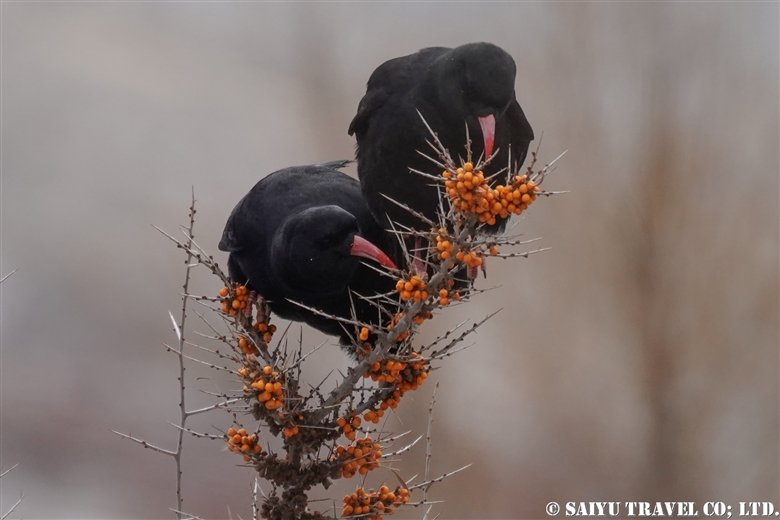
In the mountainous areas of northern Pakistan, there are “red billed crows” and “yellow billed crows.”
Strictly speaking, they are classified into the crow family Corvidae and the genus Pyrrhocorax, appropriately called red-billed chough and the yellow-billed chough (also known as Alpine Cough).
‘Chough’ is pronounced “chuf /tʃʌf ” and they breed in the highlands above 5,000m during the summer season. In the winter, they form large flocks and decend down into the valley.
Distributed through the Eurasian and African continents, the genus is divided into eight subspecies. The one found in northern Pakistan is Pyrrhocprax pyrrhocorax himalayanus, which also inhabits the Himalayan mountain region to western China. A prominent feature are the large, bluish-purple glossy wings. In Europe and in Africa, Choughs can be observed at an altitude of 2,000 to 3,000 m, but in the Himalayan Karakorum, there is only a chance to see them at higher elevations of 3,000m to 5,000m.
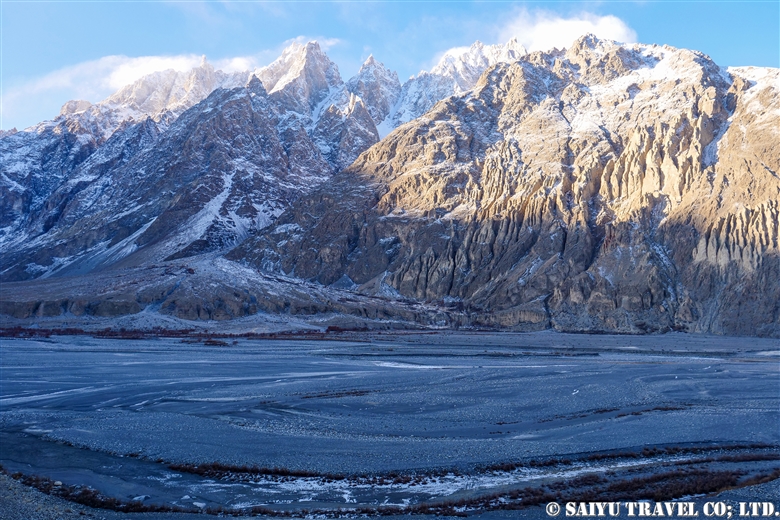
I could see red-billed choughs along the riverbanks near Morkhun village. In the winter, the upper Hunza is strikingly beautiful, as a vast landscape of jagged rocks etched by time are layered with snow like a masterful piece of art.
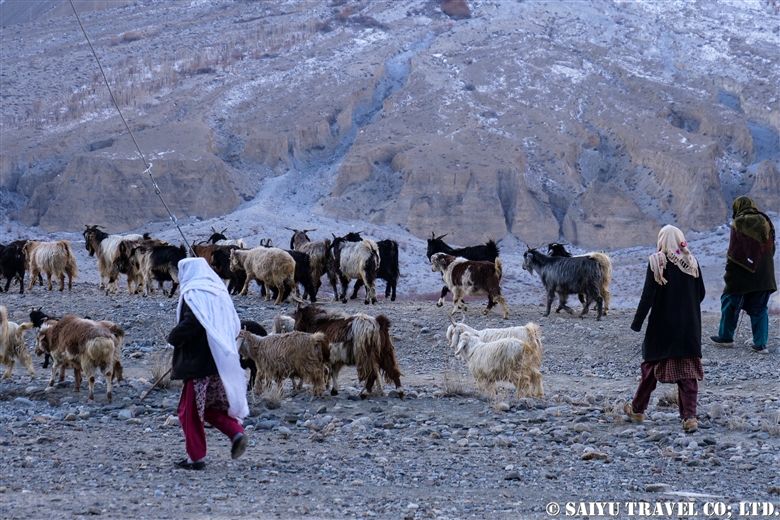
While I was watching these red-billed choughs, a herd of goats and sheep passed through to go to their grazing pastures. In the Upper Hunza there are 7 villages that during the summer will keep the yaks, sheep and goats in the Khunjerab national park area. But in the tough winter, only the adult yaks are left in the highlands, while the yearling yaks born in the summer, goats and sheep are brought down to the villages at around 3,000m. Then everyday these herds are taken to the pastures to graze.
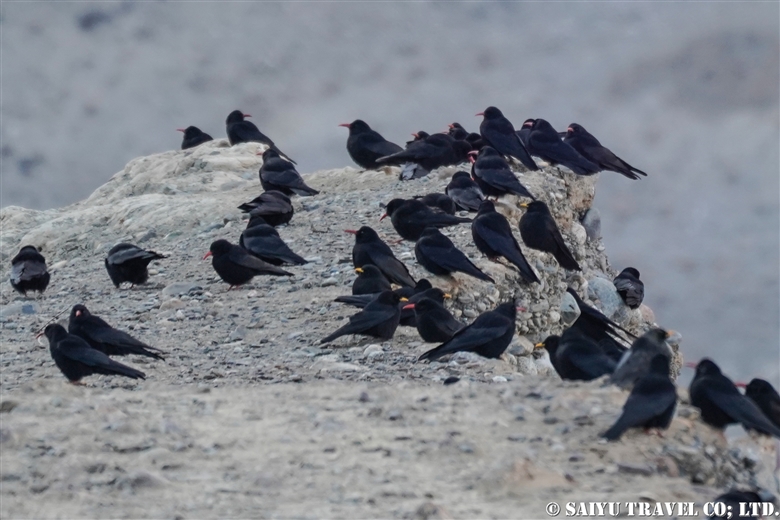
The paths that the villagers use to move the herds are lined with red & yellow billed chough. Generally since the red-billed will form large flocks, there are usually a smaller number of yellow-billed chough in the groups.
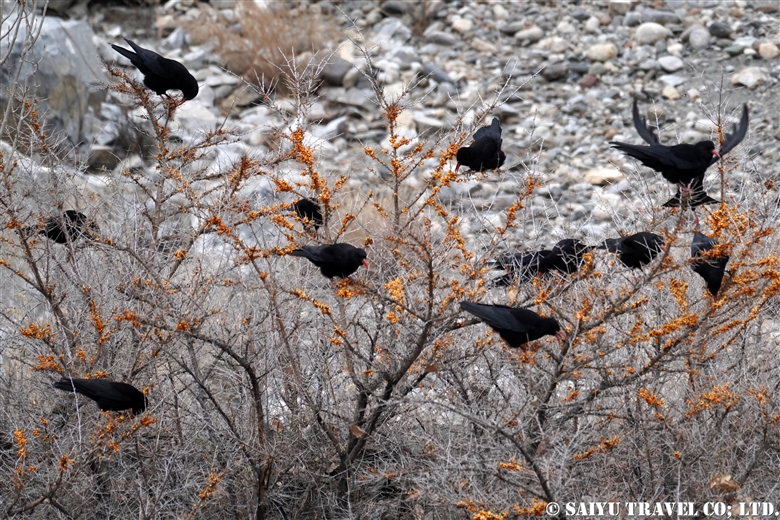
These are flocks of red-billed chough that are gathering seeds or fruit from the trees along the side of the Karakoram Highway.
Hippophae rhamnoides are a deciduous shrub found widely in Eurasia. In north Pakistan, it is a very important tree for wild birds, whose fruits are eaten during this harsh winter.
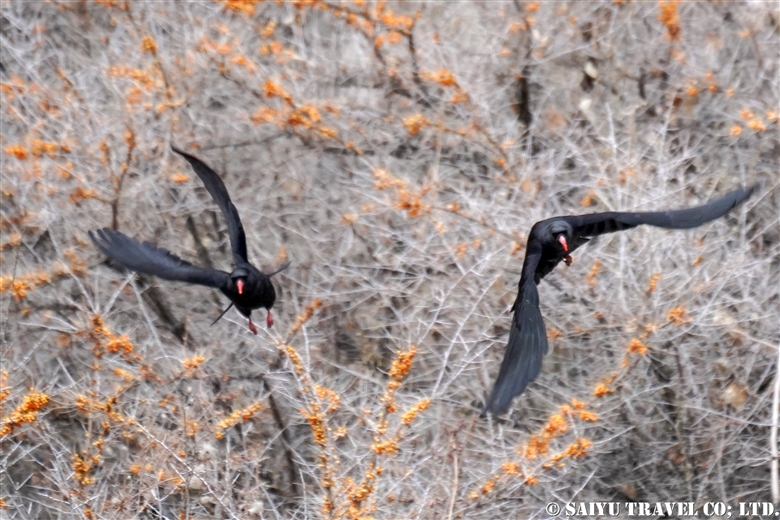
The long, curved, red colored beaks. But that isn’t the only thing that red! Their legs are also a red color!
Keep a watchful eye out when you are in the Upper Hunza and Skardu areas in the winter months. At first you may think you are seeing crows…but actually you might be lucky to see black birds adorned with red and yellow beaks! It is no ordinary crow!
Photo & text : Mariko SAWADA
Observation : Dec 2020, On the KKH ( Morkhun – Sost), Gilgit-Baltistan
Special Thanks : TOMO Akiyama
Tag : Saiyu Travel Pakistan , KKH , Bird watching in Pakistan , Karakoram Highway , Birds of Pakistan , Pakistan Travel company , Northern Pakistan Travel , Pakistan tour operator , Pakistan Blog , Pakistan Photography Tour , Pakistan Travel Blog , red-billed Chough , Travel Pakistan Blog , Yellow-billed Chough , Wildlife of Pakistan , Birds Photography Pakistan , Indus Caravan , Bird watching tour in Pakistan , Wildlife tour in Pakistan , Pakistan Wildlife Tour





